Cuba

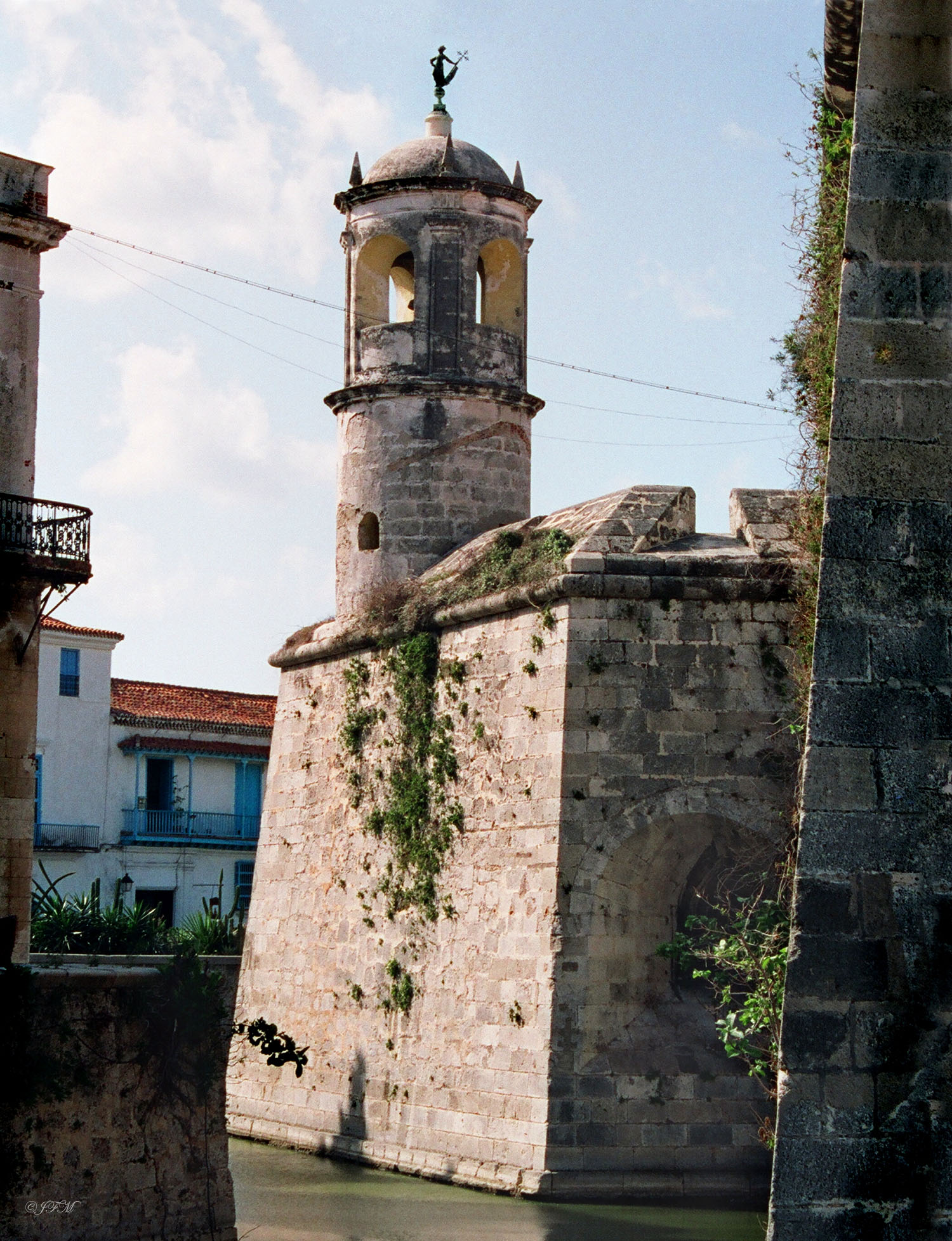
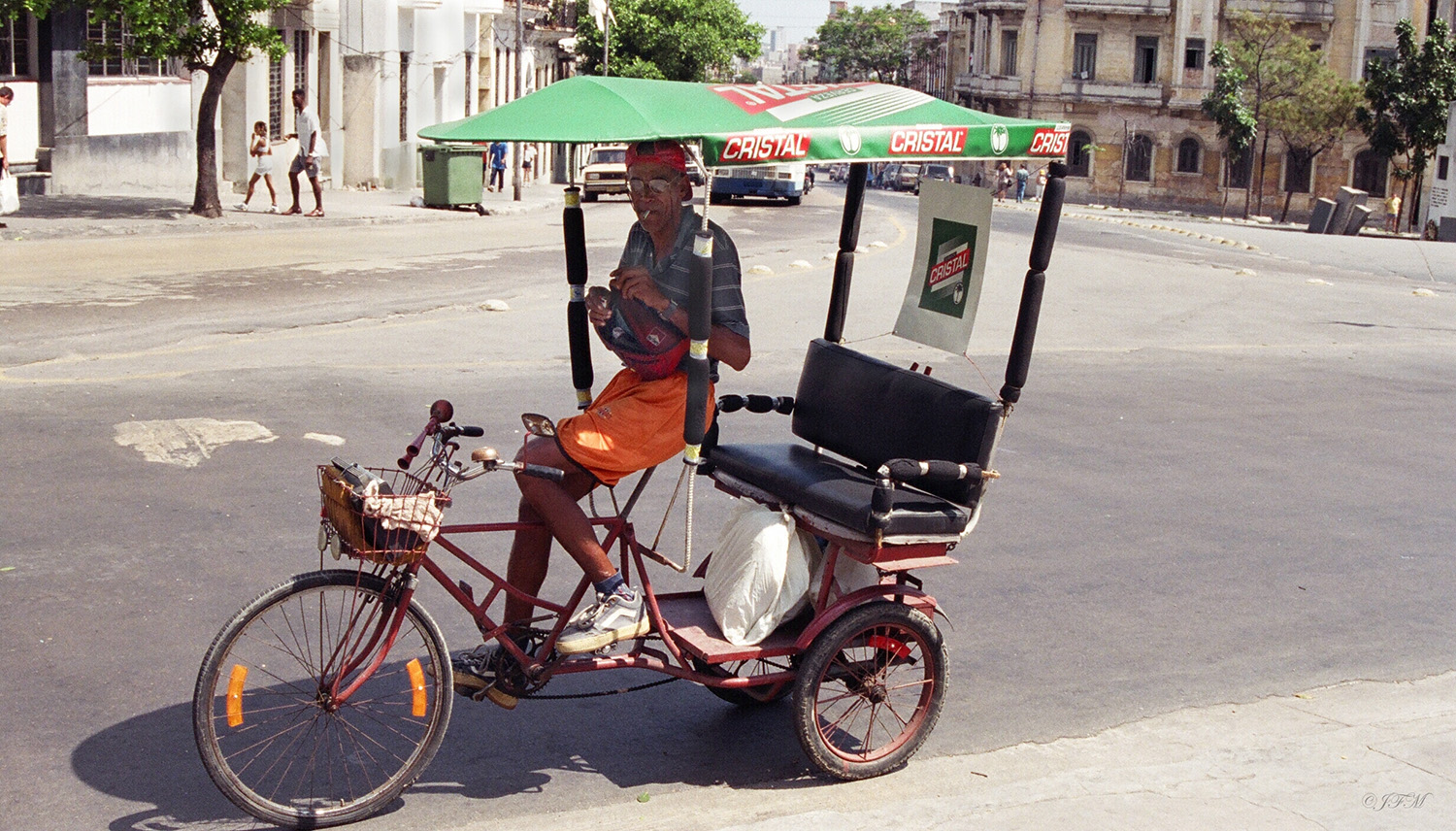
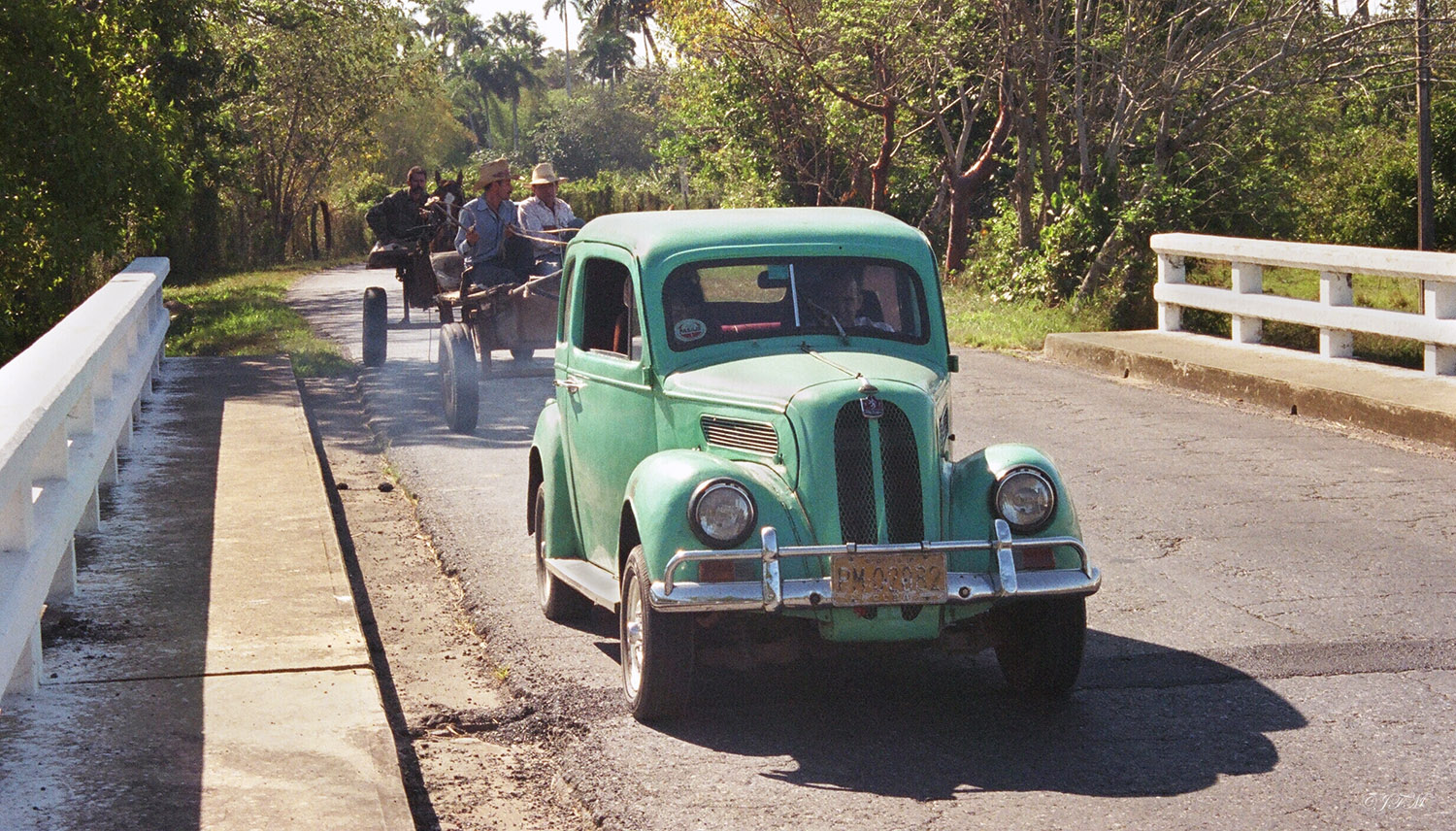
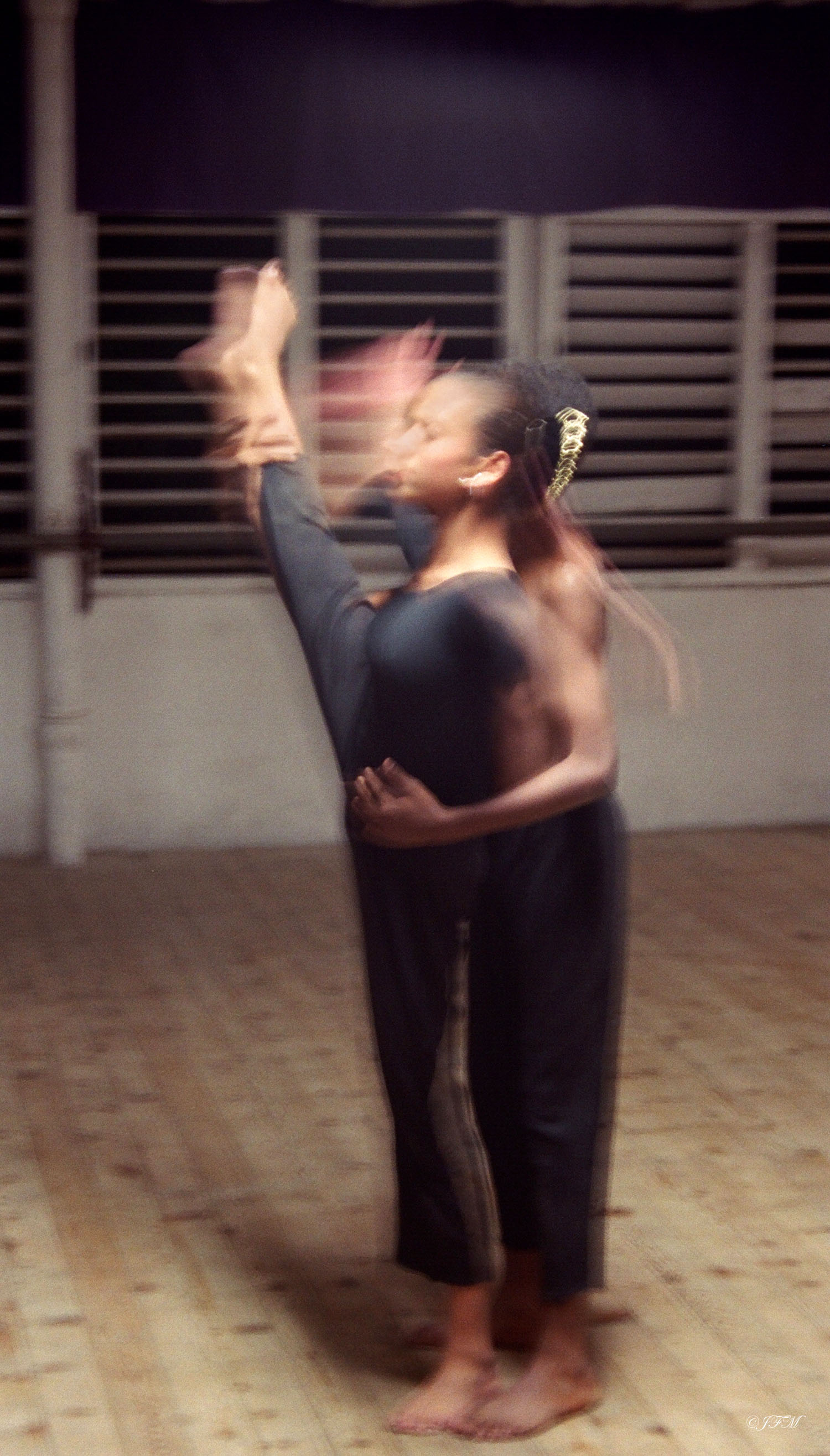
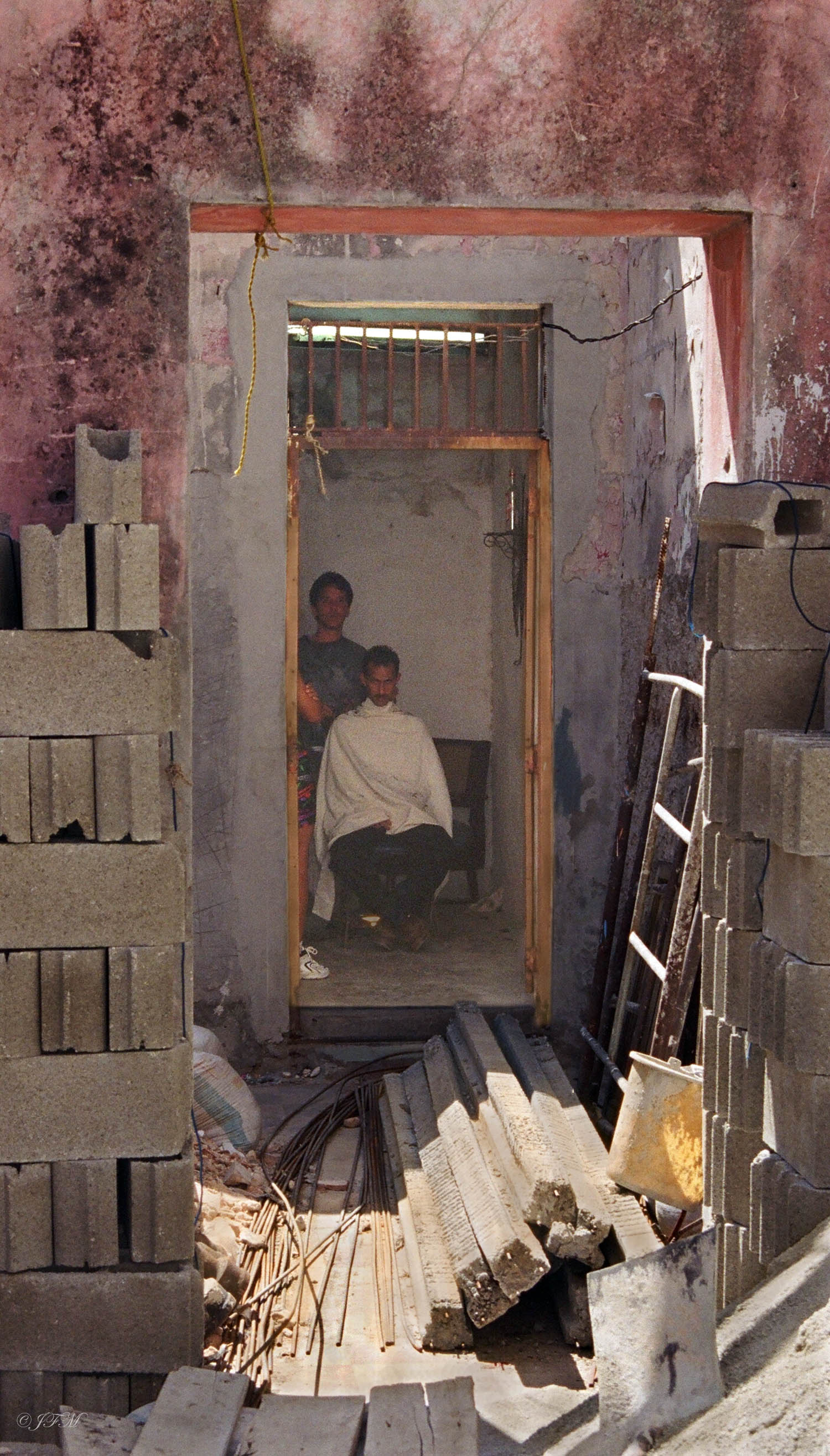

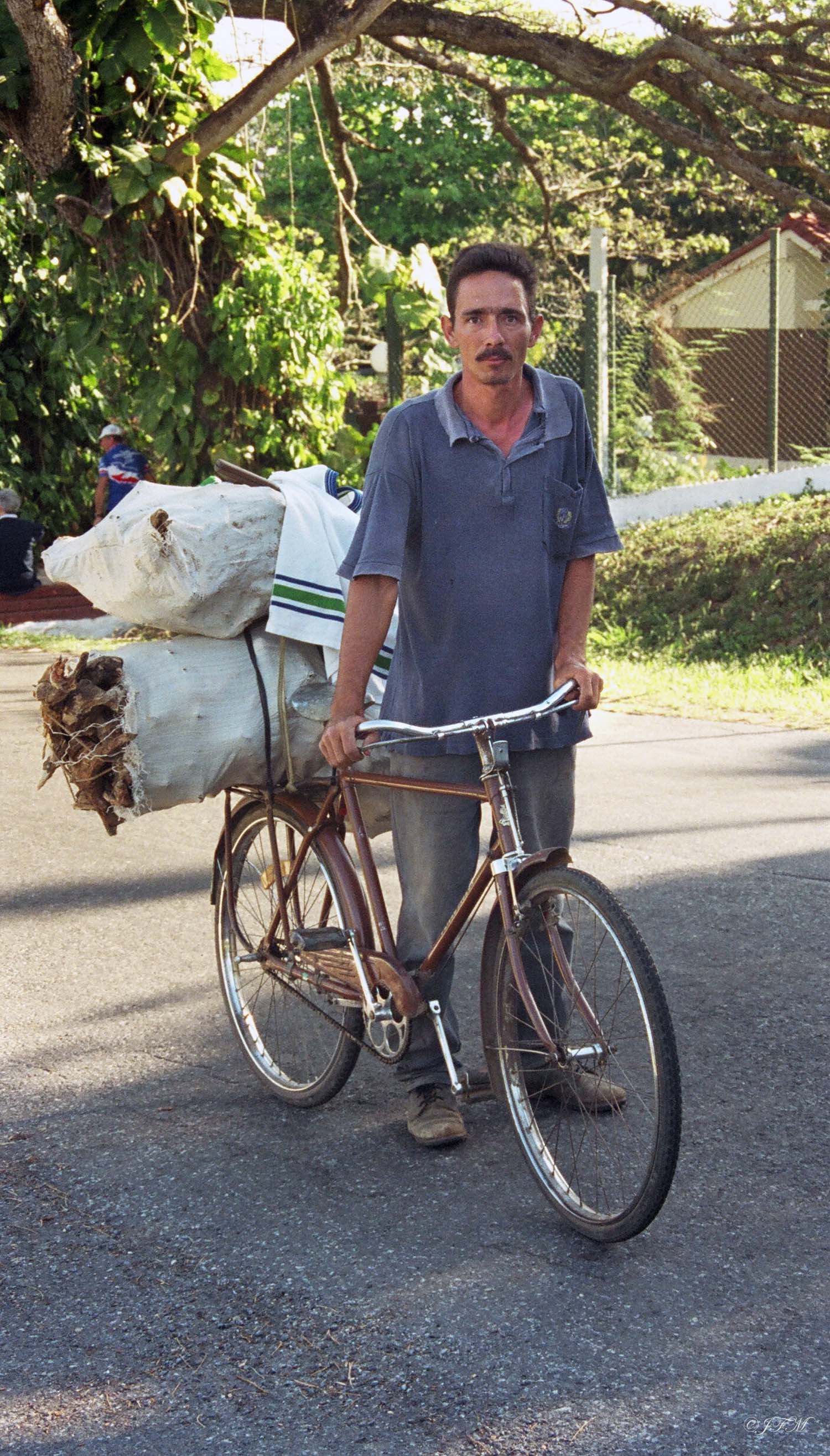
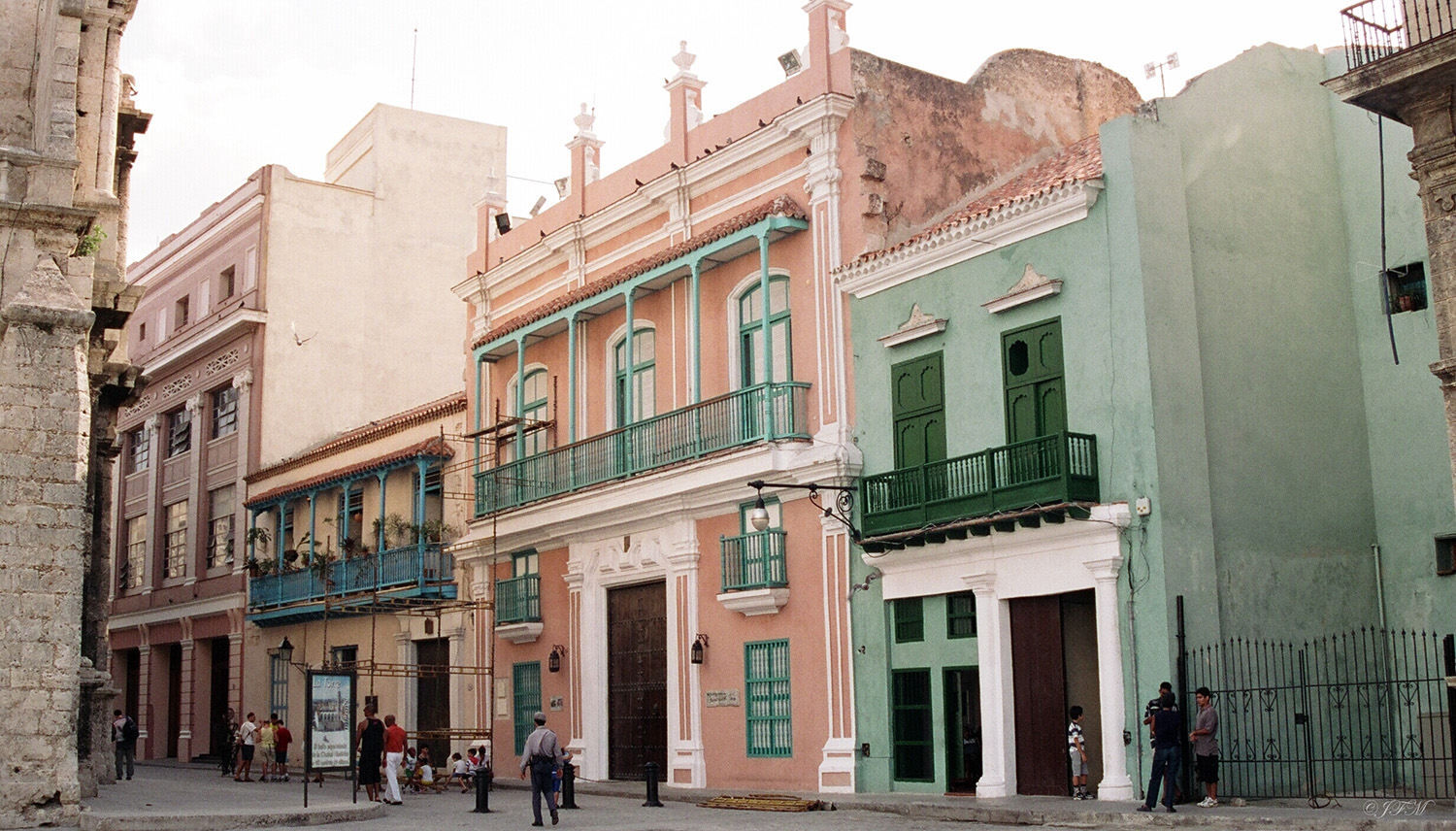
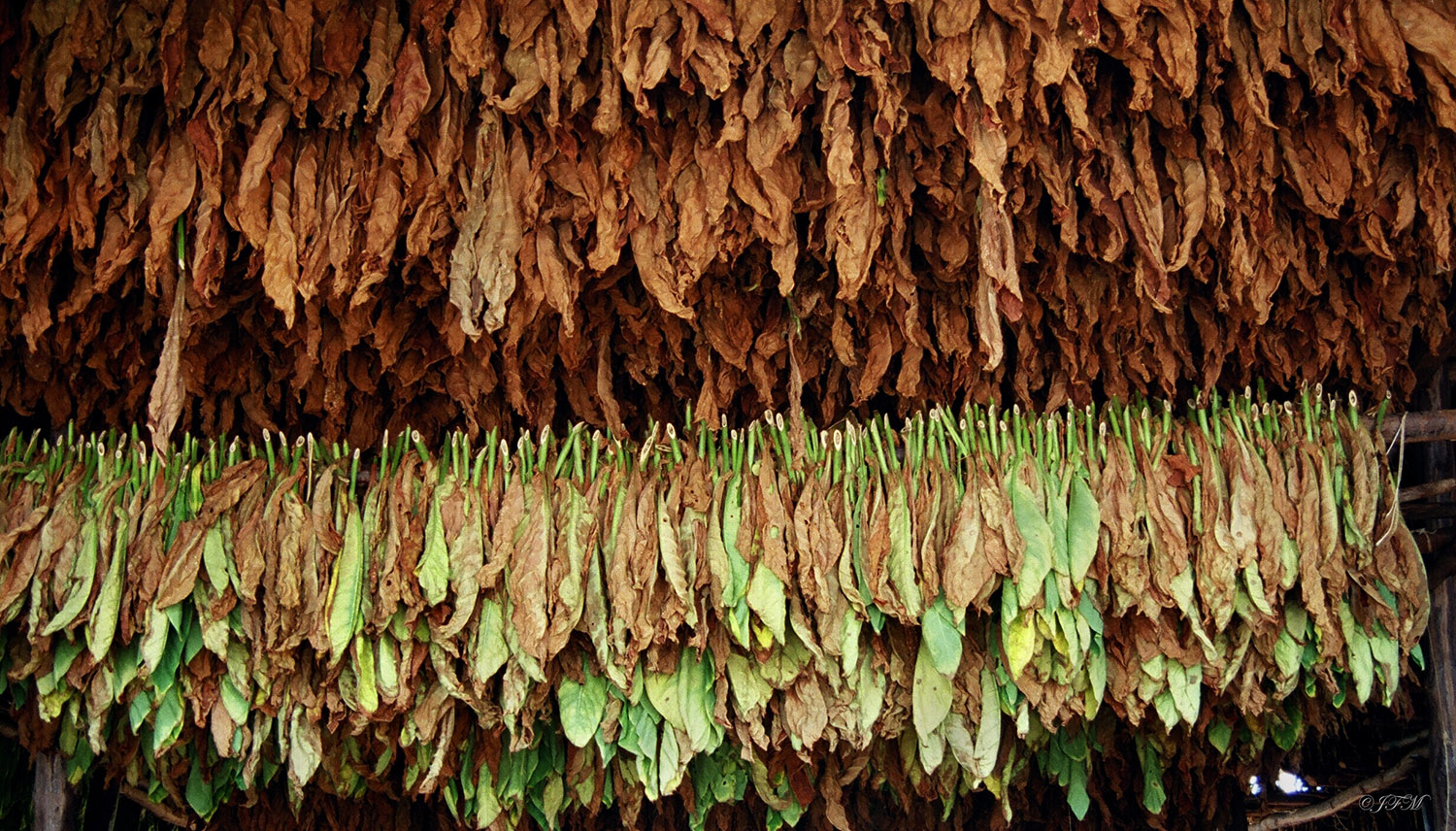
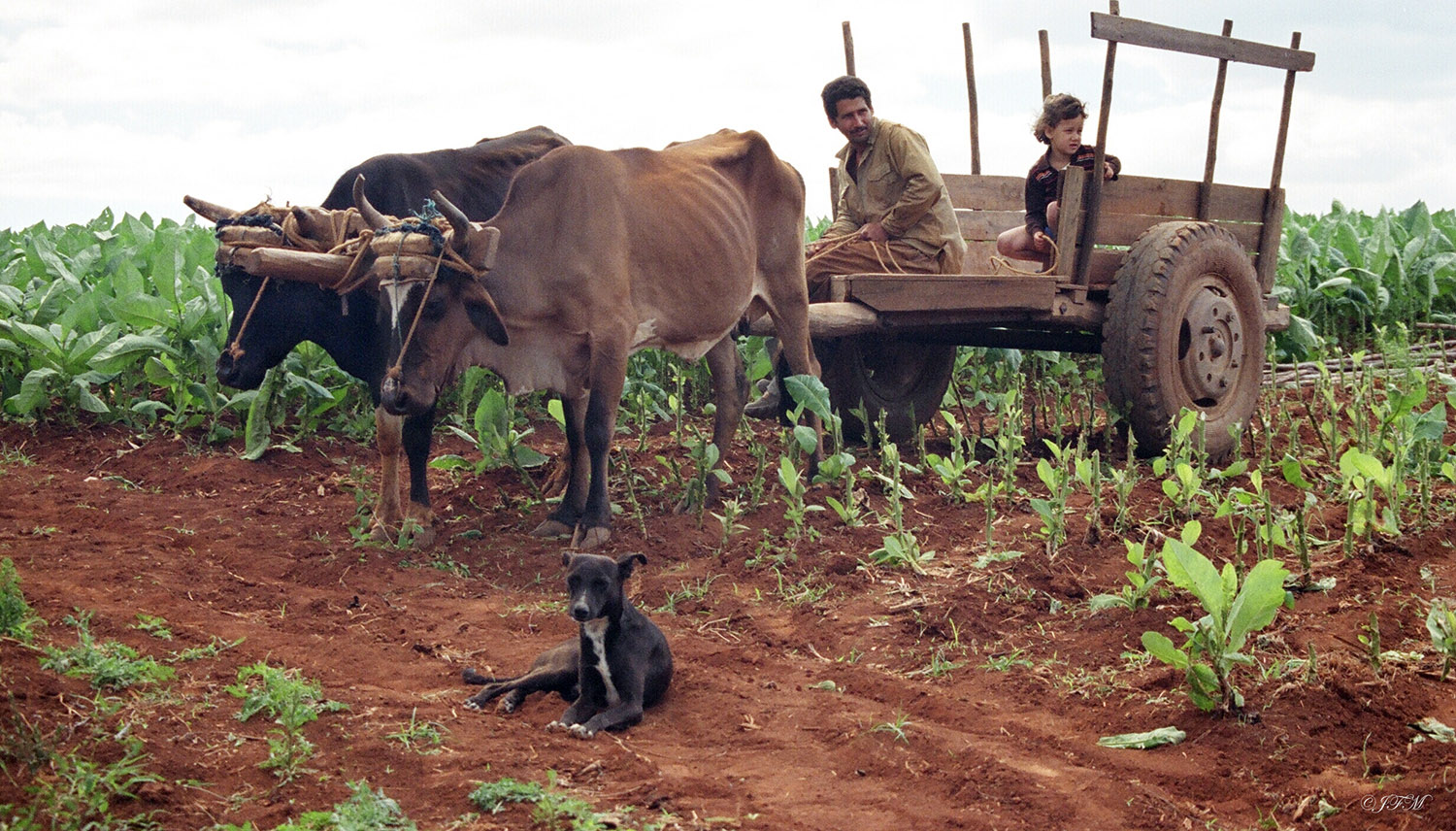

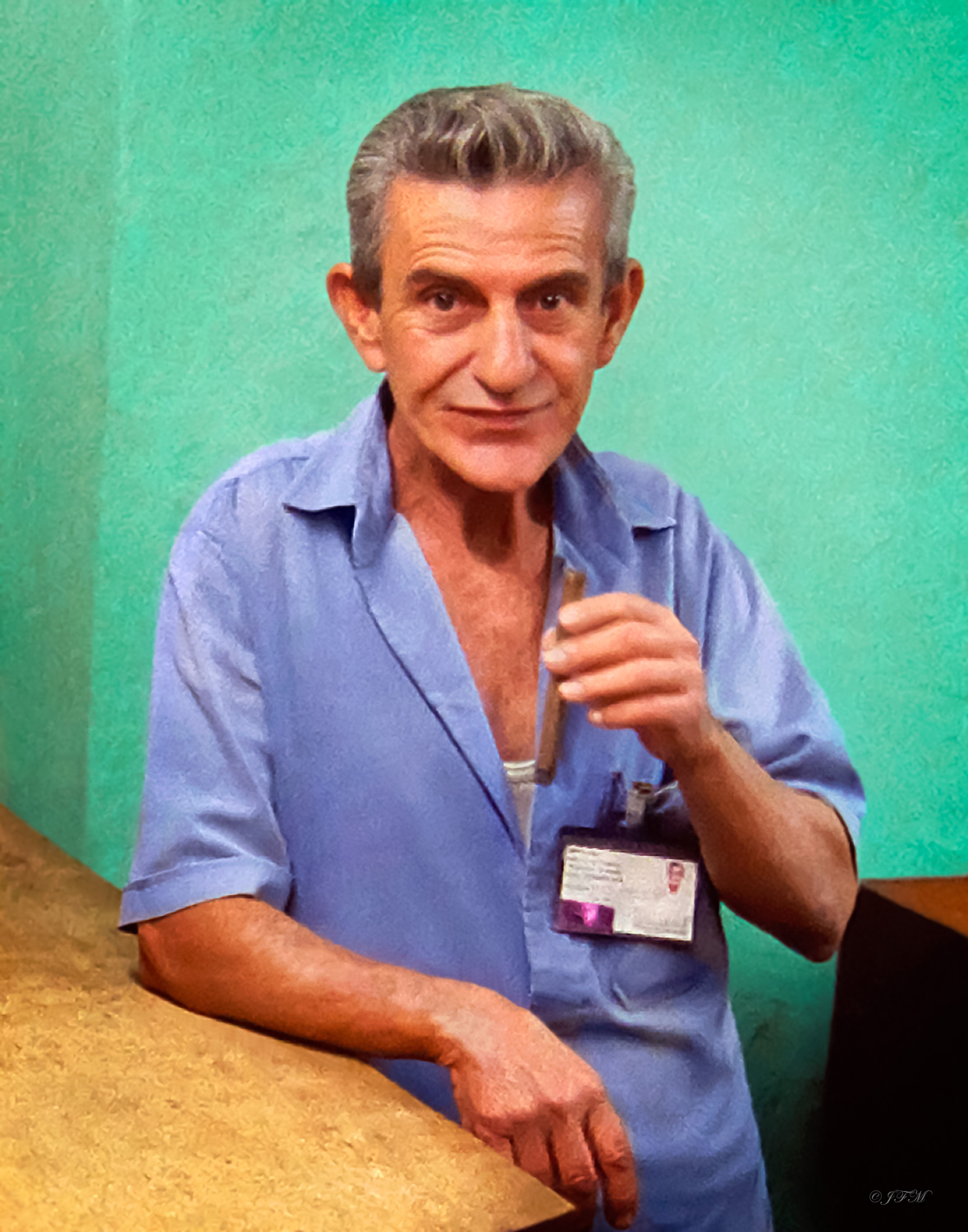
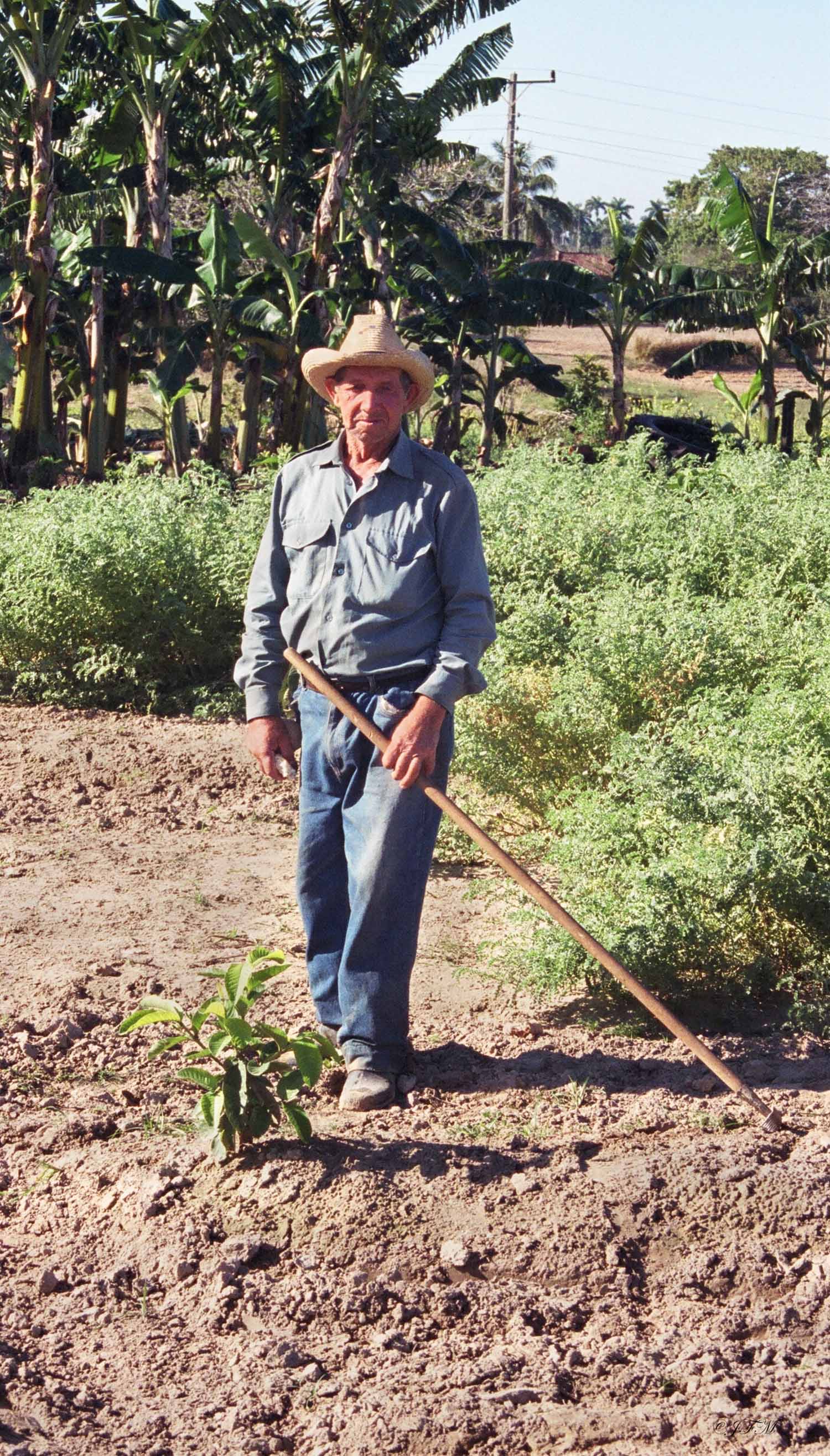
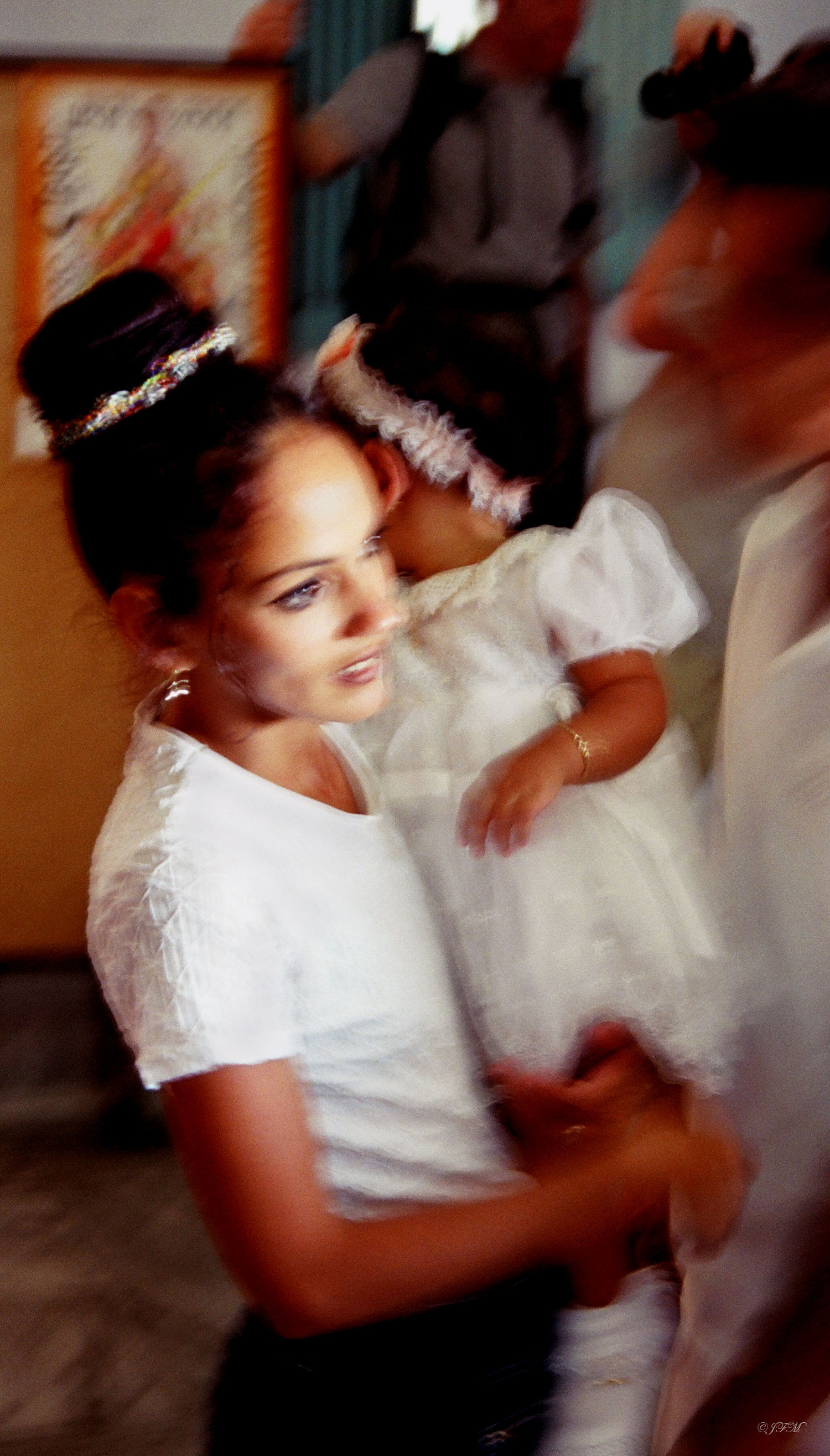
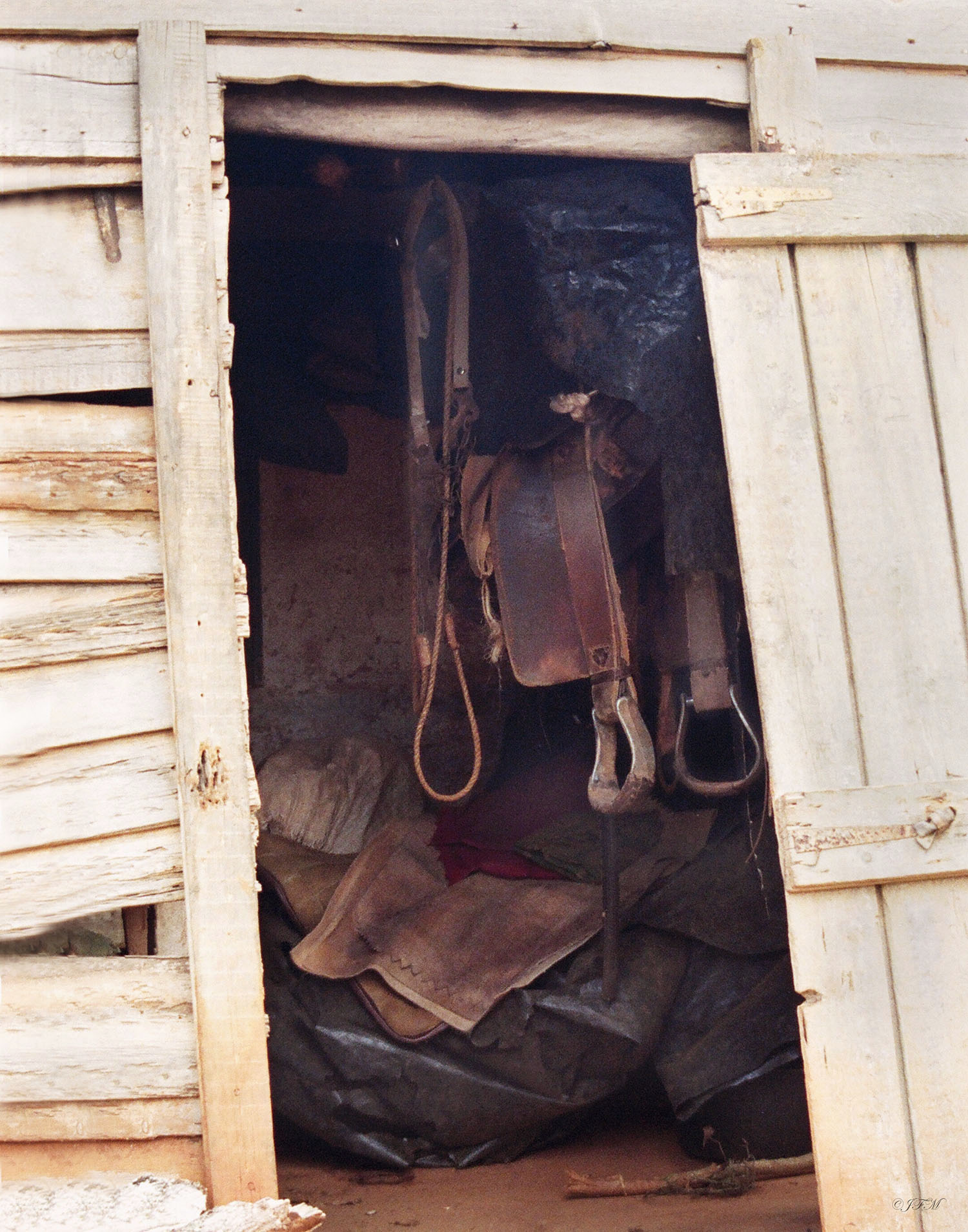
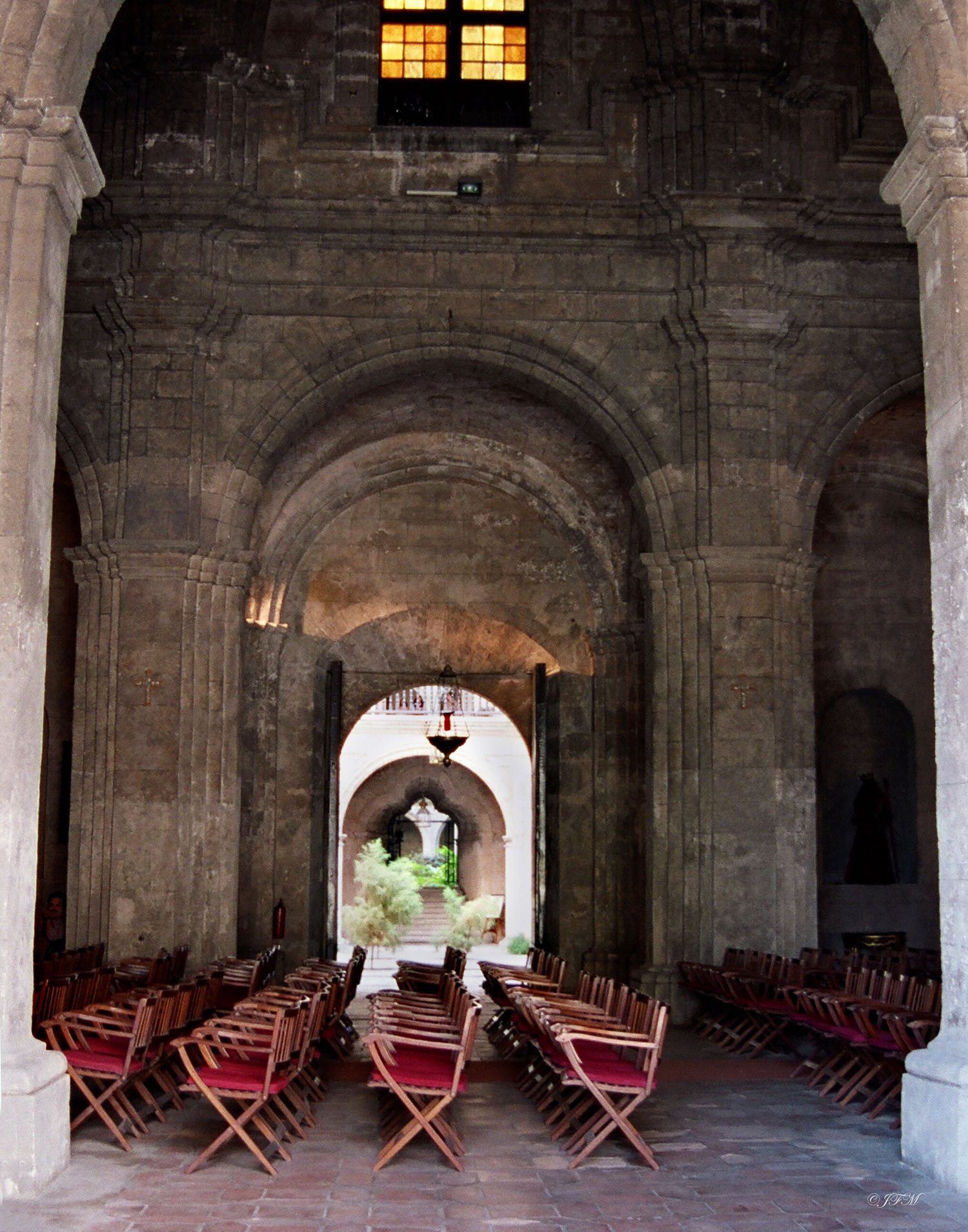
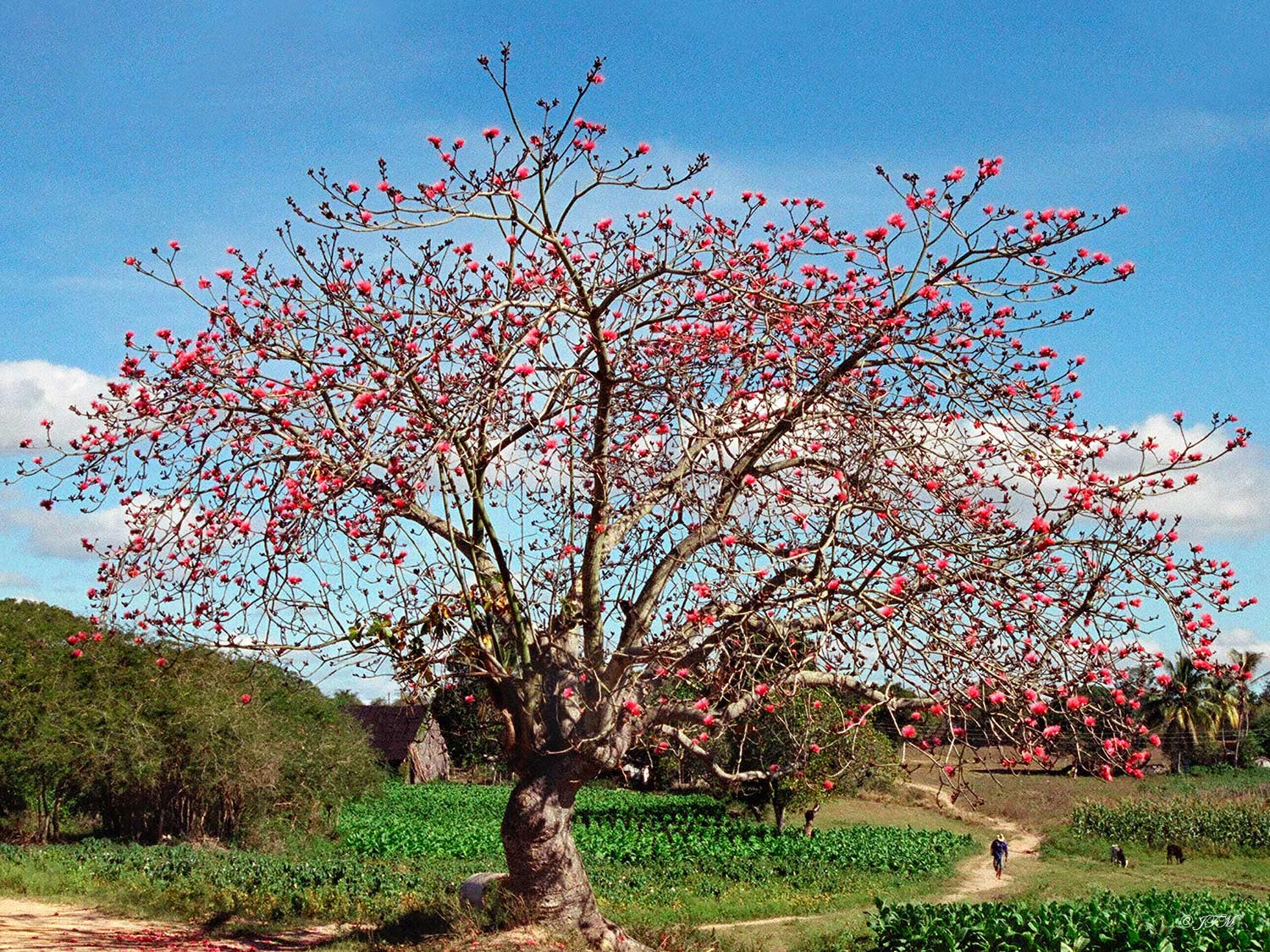
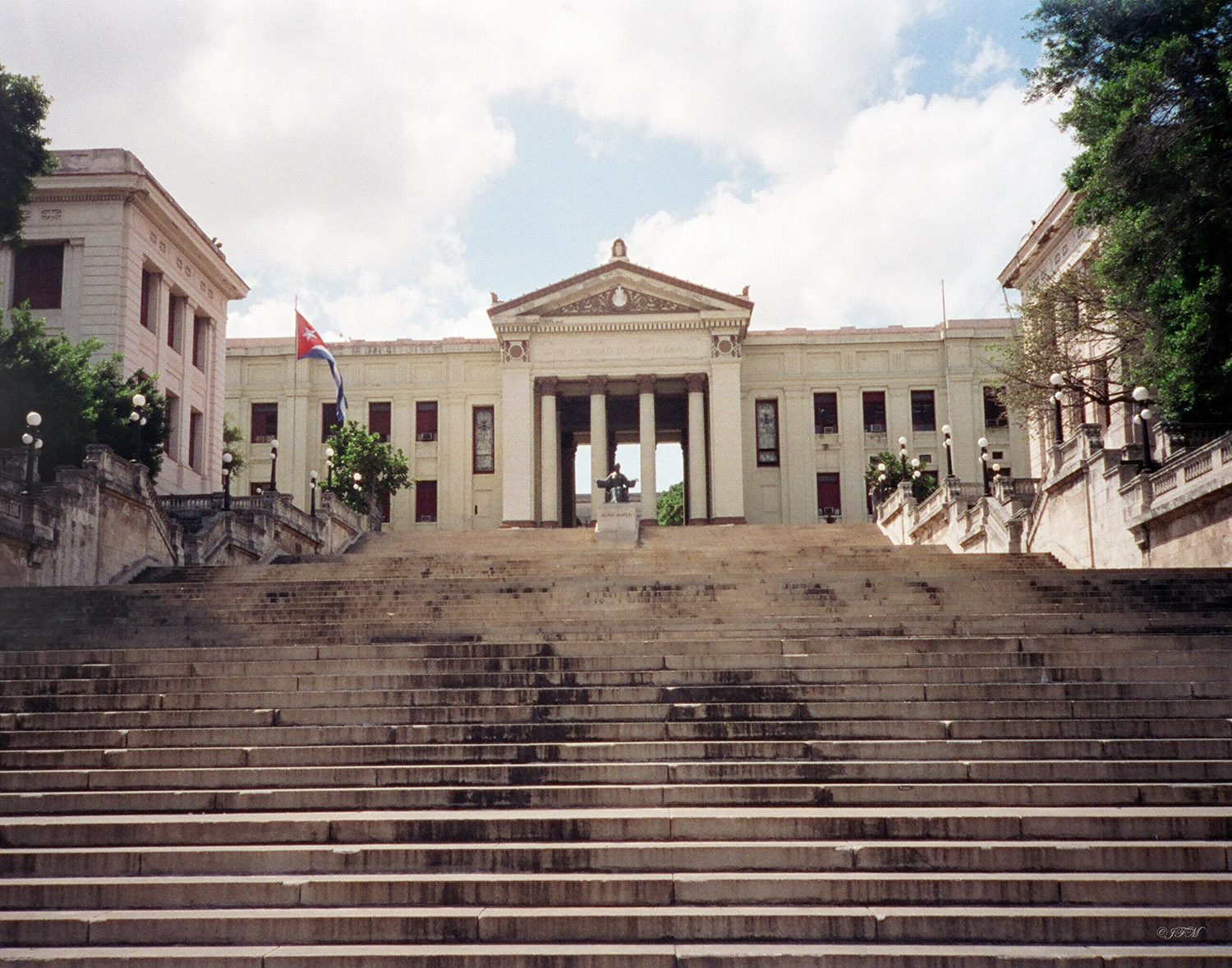
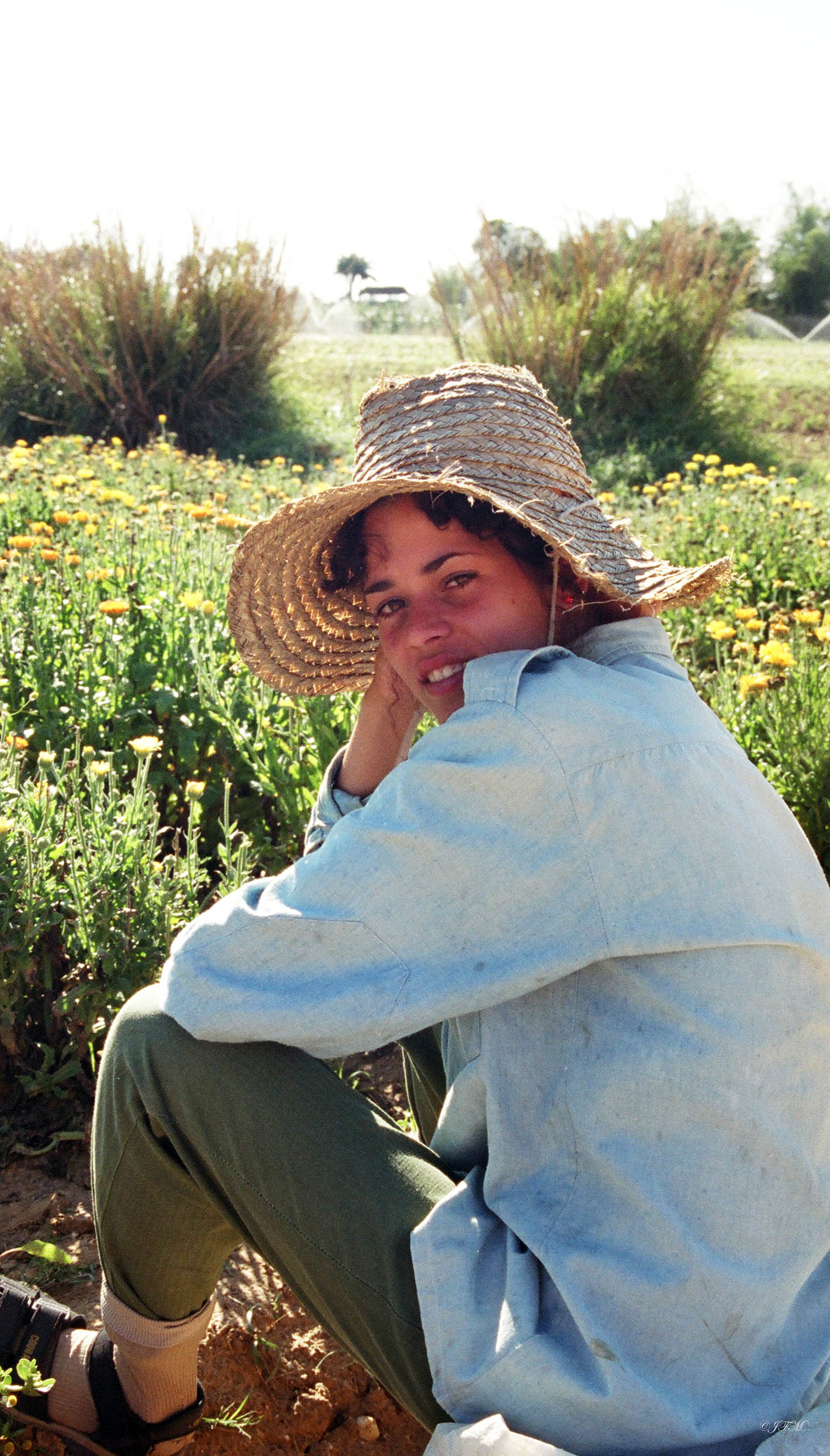

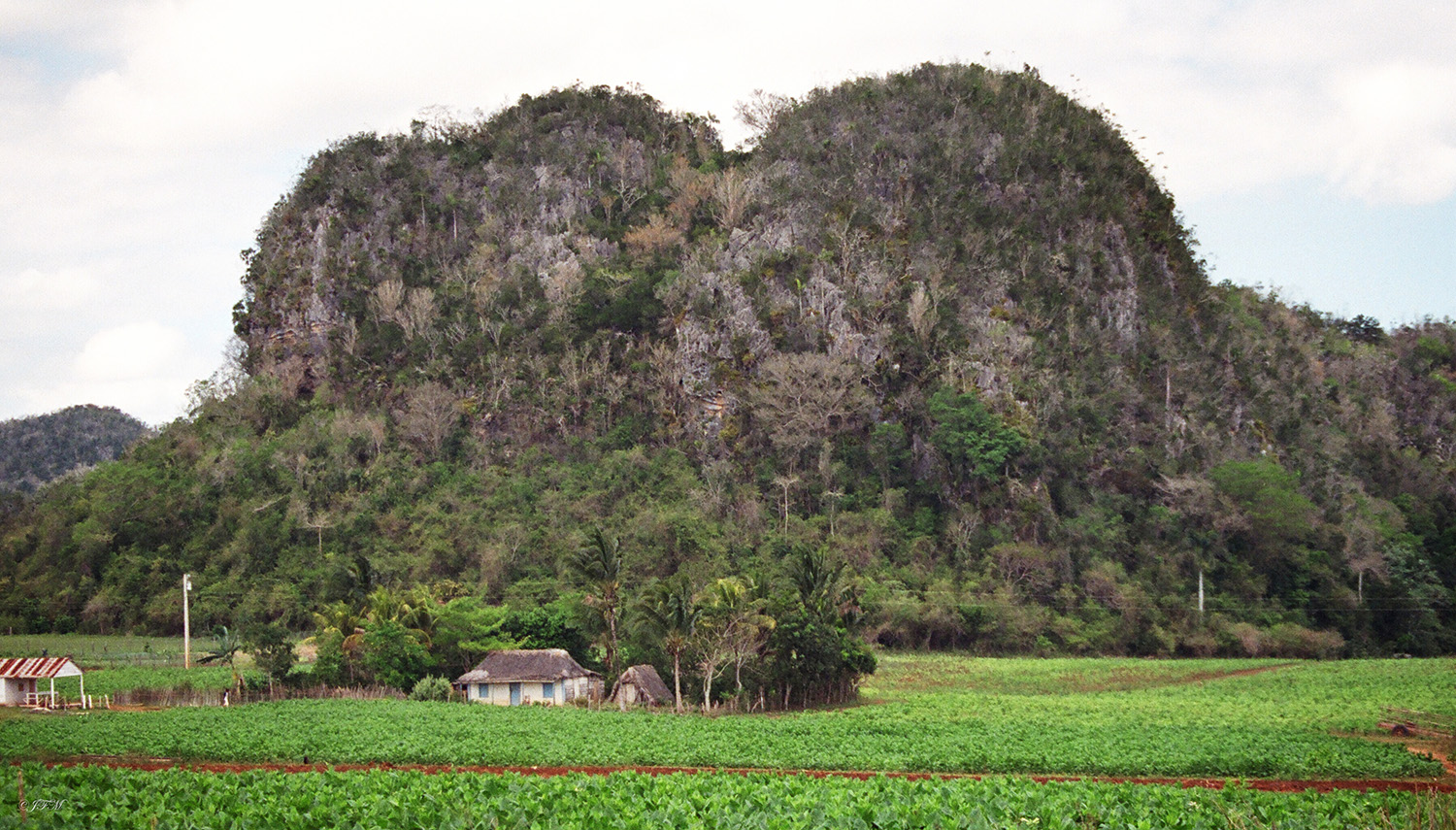
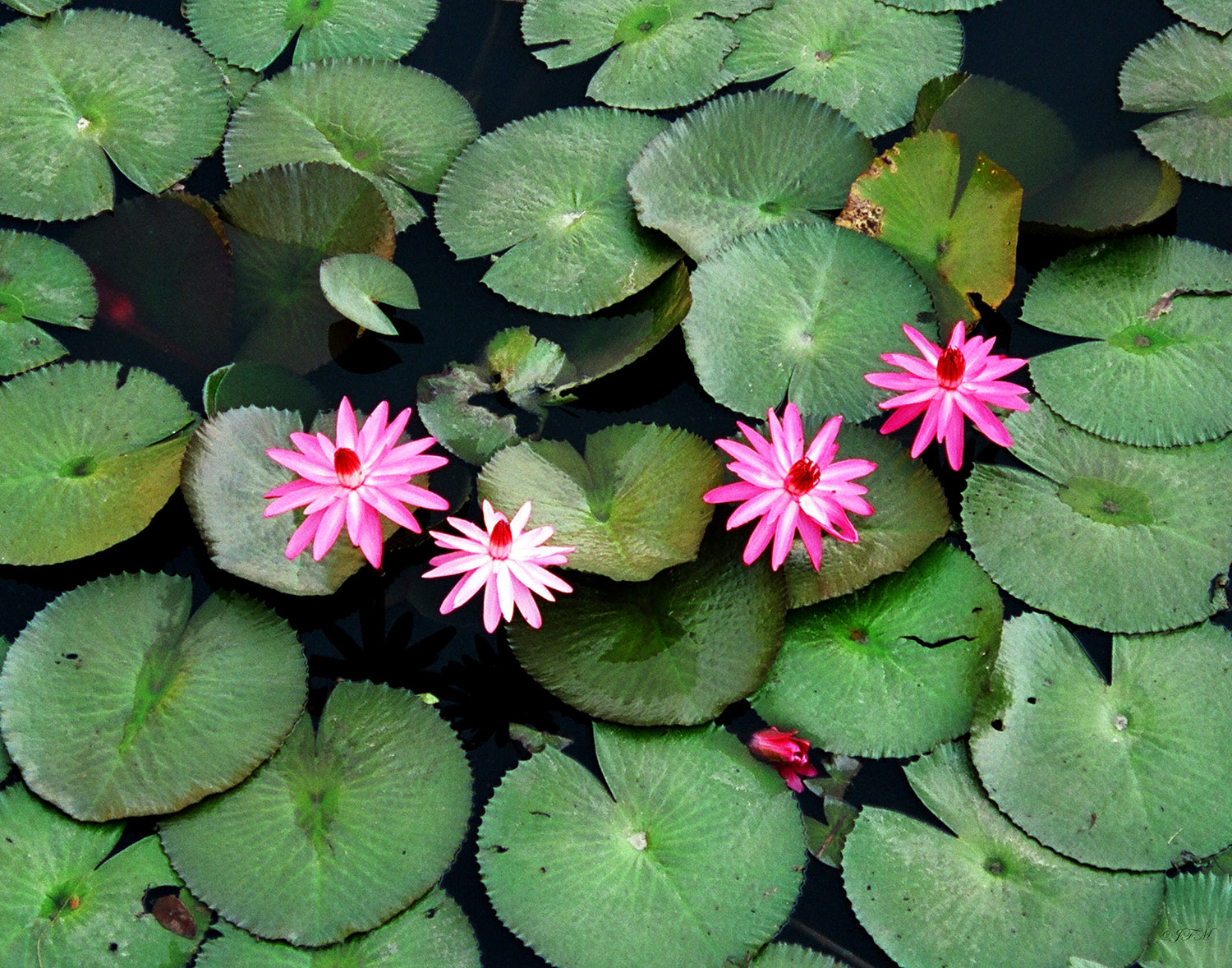
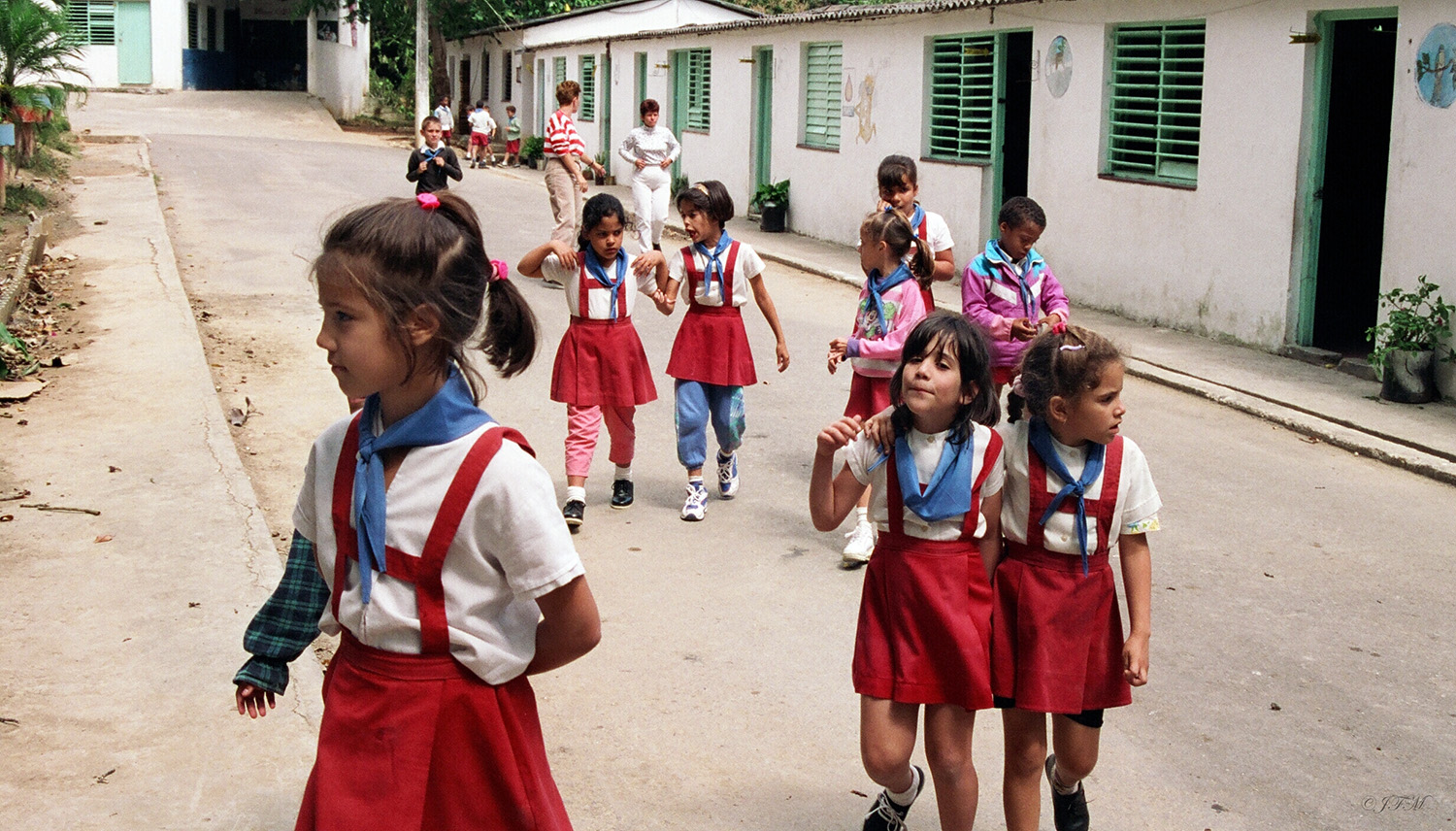
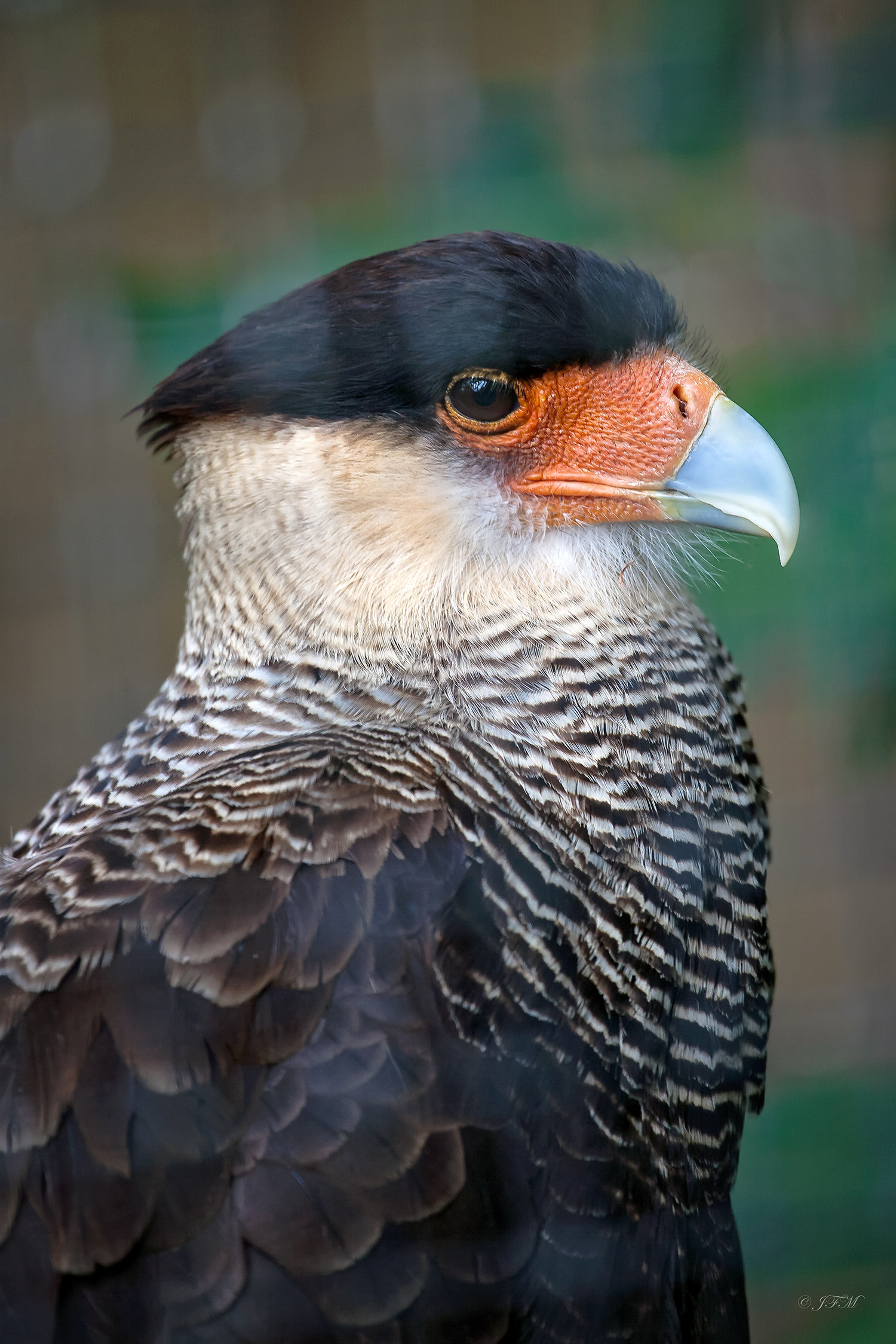
Castillo de los Tres Reyes Del Morro Fortress guards the Havana Harbor entrance. This is a narrow inlet of 1 mile/1.5 kilometers that opens into three main harbors: Marimelena, Guanabacoa & Atares. Each evening at 9:00 PM the closing of the Harbor ceremony with a canon fired when a chain was drawn tight across the entrance to stop pirate sailing ships from entering. 1898 the US Battleship Maine was sunk in the Harbor and in 1960 The French munitions ship La Coubre explored which many attribute to the CIA effort to stop Fidel Castro.
Old Havana, Cuba watchtower fortification and moat to protect against invasion/pirates.
The US Embargo meant Cuba could not get any US products and automobiles. Fedel Castro got a million Chinese Bicycles for his people.
The old and the very old mix of transportation in Cuba Pinar del Rio Province near the Hotel Aguas Claras.
Eva Roul Sanches Performing Arts School: Dance students in one of the three state musical arts schools in Pinar del Rio Province, Cuba.
La Regla, Cuba across the bay from Old Havana, Cuba.
Break from a Sunday afternoon baseball game. La Regla, Cuba.
The US Embargo ment Cuba could not get any US products and automobiles. Fedel Castro got a million Chinese Bicycles for his people.
Restored portion of Old Havana Cuba circa late 1700's buildings.
Santiago de Chile Tobacco coop. Cuba. Tabaco drying shed. President John F. Kennedy enjoyed H. Upmann Cuban cigars to the point that before he signed the Cuban embargo he had his Secretary of State, Henry Kissinger, buy every one he could find.
Santiago de Chile tobacco coop. Cuba. The pace of life is slow on the coop this man and his child made one very slow pass through this field. They stopped to have just to watch me for 15 minutes. The first cutting is used for cigars and the second for cigarettes.
Cigar Factory-Fabrica de Tabacos, Fancheo Denalter, Pinar del Rio, Cuba. President John F. Kennedy enjoyed H. Upmann Cuban cigars to the point that before he signed Proclamation 3447 -- the Cuban embargo -- he had his Secretary of State, Dean Rusk, buy every H. Upmann that could be found in the Washington DC area.
Cigar Factory-Fabrica de Tabacos, Fancheo Denalter, Pinar del Rio, Cuba. President John F. Kennedy enjoyed H. Upmann Cuban cigars to the point that before he signed Proclamation 3447 -- the Cuban embargo -- he had his Secretary of State, Dean Rusk, buy every H. Upmann that could be found in the Washington DC area.
Finca de Pontas Medicinales La Quinta, Pinar del Rio Province, Cuba. This is one of the three state run Herbal medicine coop farms in Cuba. The US Embargo met Cuba could not get any of the US medications. Fedel Castro turned to herbal medications for his country.
Lady of La Regla Catholic Church, La Regla, Cuba. Across the bay from Havana. 21 children were baptized this Sunday morning.
Santiago de Chile Tobacco Coop. Vinales Valley, Pinar del Rio Provence, Cuba.
Court yard Old Habana, Cuba.
Finca de Pontas Medicinales La Quinta, Pinar del Rio Province, Cuba. This is one of the three state run Herbal medicine coop farms in Cuba. The US Embargo met Cuba could not get any of the US medications. Fedel Castro turned to herbal medications for his country.
Sunday Morning March 2001 University of Havana, Havana, Cuba. Note the police will not let you walk on these steps. I tried to get a different photo and was directed off the steps.
Girl Laborer resting. Finca de Pontas Medicinales La Quinta, Pinar del Rio Province, Cuba. This is one of the three state run Herbal medicine coop farms in Cuba. The US Embargo met Cuba could not get any of the US medications. Fedel Castro turned to herbal medications for his country.
Girl Laborer resting. Finca de Pontas Medicinales La Quinta, Pinar del Rio Province, Cuba. This is one of the three state run Herbal medicine coop farms in Cuba. The US Embargo met Cuba could not get any of the US medications. Fedel Castro turned to herbal medications for his country.
Rock outcroppings Pinar del Rio Provence, Cuba.
The lilies are in a pond on the grounds of the Hotel Aguas Claras Pinar del Rio Provence, Cuba.
The northern crested caracara (Caracara cheriway), also called the northern caracara and crested caracara. The northern caracara is a resident in Cuba, northern South America (south to northern Peru and northern Amazonian Brazil) and most of Central America and Mexico, just reaching the southernmost parts of the United States, including Florida. It inhabits various types of open and semi-open country. They typically live in lowlands but can live to mid-elevation in the Northern Andes. The species is most common in cattle ranches with scattered trees, shelterbelts and small woods, as long as there is a somewhat limited human presence.